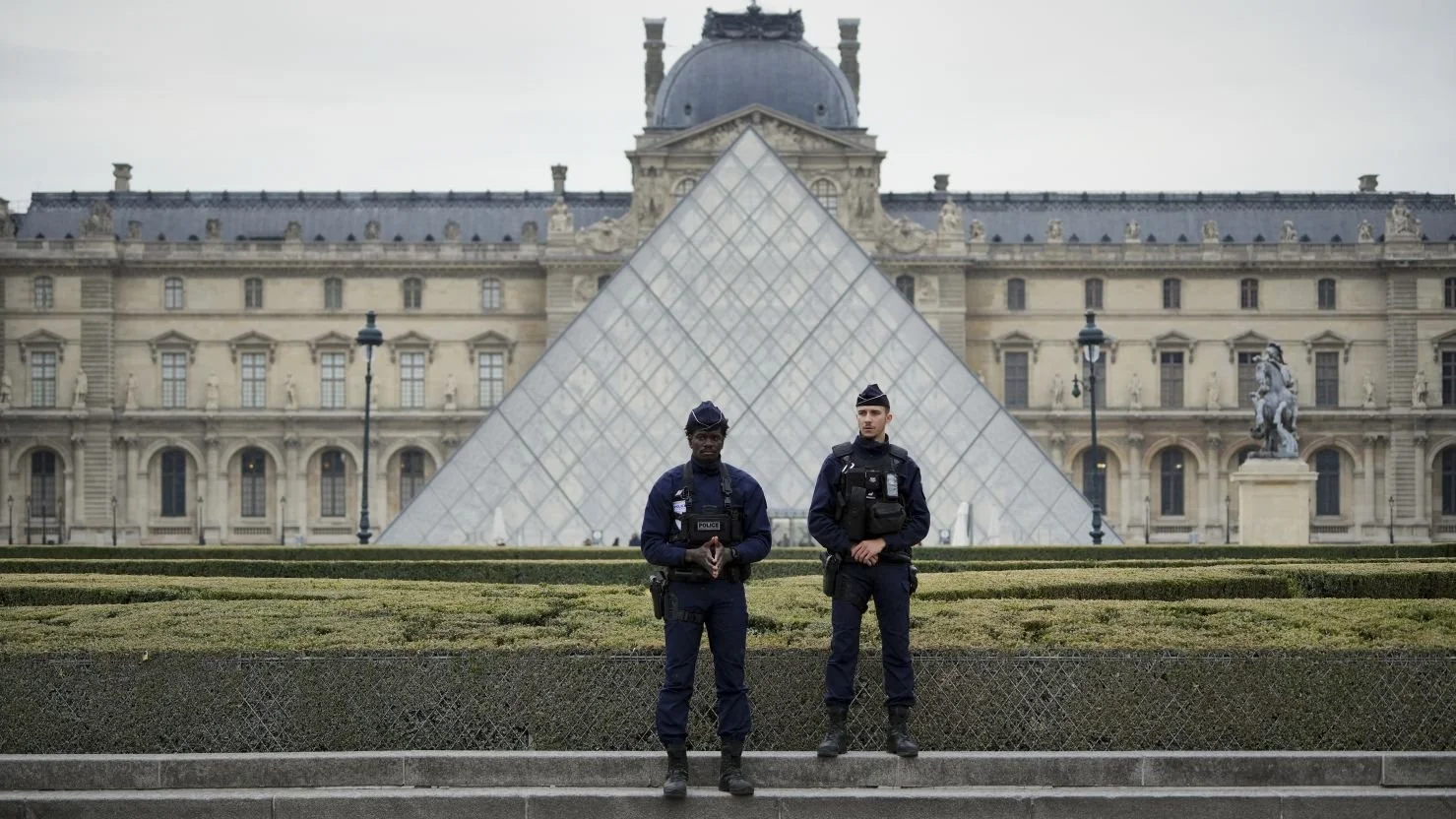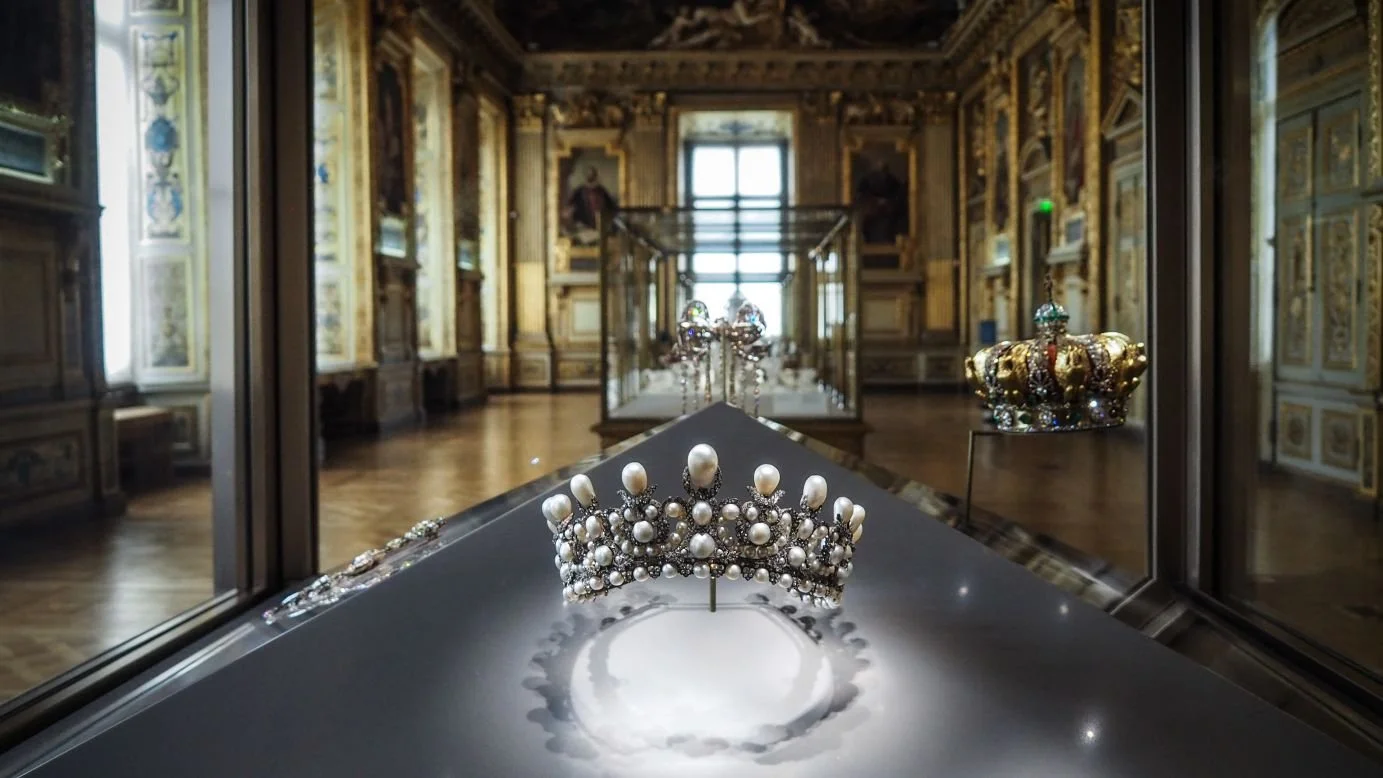The Louvre Robbery: France’s Royal Gems
On the morning of Sunday 19 October 2025, the world-famous Louvre Museum in Paris became the scene of a bold daylight robbery that stunned art and history lovers around the globe. A group of masked intruders managed to mount a rapid strike, entering one of the museum's most prestigious galleries and escaping with priceless pieces of France’s royal and Napoleonic jewellery.
The Heist
At around 9.30 a.m., shortly after the museum opened for the day, four individuals disguised as workers, according to reports, brought a vehicle with a boom lift to the river-facing façade. Using that elevating platform they accessed a second-floor window of the Galerie d’Apollon, the ornate hall where France’s crown jewels and royal gems are on display. Inside the gallery they smashed two display cases with power tools and made off with eight historic pieces in what investigators estimate took between four and seven minutes. One of the items, a famed crown associated with Empress Eugénie, was dropped by the thieves and found damaged near the museum. The items taken include: a necklace and earrings originally given by Napoleon Bonaparte to his second wife Empress Marie-Louise; a tiara, brooch and decorative bow belonging to Empress Eugénie; and a tiara, necklace and single earring from a sapphire jewellery set once worn by Queen Marie-Amélie of France. Despite the daring nature of the theft, the legendary “Regent Diamond”, one of the world’s most valuable diamonds and part of the same collection, remained untouched.
Aftermath and Investigation
The museum was immediately closed for the rest of the day and remained shut on Monday while police and forensic teams combed the site. Officials assigned a large investigation team to the case, viewing it as the work of a well-organised gang rather than a spontaneous smash-and-grab. French authorities have publicly admitted that glaring security shortcomings were exploited during the raid. The fact that heavy machinery could be brought so close to the museum façade and that the gallery in question was accessible from an exterior window, has raised serious questions about the adequacy of protection around objects of national importance. One expert in art recovery warned that unless the stolen jewels are recovered within 24-48 hours, they may be irretrievably lost: melted down, recut or otherwise altered beyond recognition.
A Blow to Heritage and Reputation
This heist is not merely the theft of valuable objects. These jewels are imbued with cultural and national significance, belonging to the heritage of France and intimately tied to its monarchy and imperial past. For the Louvre, already the world’s most visited museum and a global icon of art and civilisation, the event is a reputational shock. Political and cultural leaders have condemned the robbery. The French President characterised it as an attack on the nation’s heritage, signalling the gravity with which the state regards the breach. Meanwhile, staff and unions at the museum have long voiced concerns over overcrowding, staffing shortages and lagging security investment — factors now being re-examined in light of the theft.
Gemmological Treasures Beyond Price
Among the treasures stolen from the Louvre’s Galerie d’Apollon were eight exceptional jewels of profound historical and gemmological importance, each a masterpiece of 19th-century French craftsmanship. The ensemble included parures belonging to Empress Eugénie, Empress Marie-Louise, and Queen Marie-Amélie — women whose collections symbolised both imperial splendour and the refinement of Parisian jewellery during the Napoleonic and early Bourbon eras. Particularly notable is the sapphire tiara of Marie-Amélie, a composition of natural Kashmir sapphires prized for their velvety cornflower blue hue and remarkable transparency. The stones, likely mined in the Zanskar region before 1880, were mounted in silver-and-gold settings typical of the time, where the silver enhanced the cool tone of the sapphires while gold added warmth to the diamonds framing them. Equally precious was the parure gifted by Napoleon to Marie-Louise, featuring old mine-cut diamonds with distinct cushion shapes, set in delicate floral motifs echoing the Empire’s neoclassical aesthetic. From a gemmological perspective, these diamonds represent an intermediate stage between the primitive Mazarin cuts and the later brilliant cut, displaying deep pavilions and smaller tables that create a romantic, candlelight sparkle. Empress Eugénie’s tiara and bow brooch, both adorned with Burmese rubies and colour-graded diamonds, exemplified the height of 1850s French design by Bapst & Fils, the court jewellers of the Second Empire. Their loss is not merely the disappearance of royal ornaments but of rare gemstones that serve as historical witnesses — unrepeatable examples of early gem trade routes, artisanal metalwork, and the evolving taste that defined European court jewellery.
Images Credits: The Guardian, CNN, BBC.




